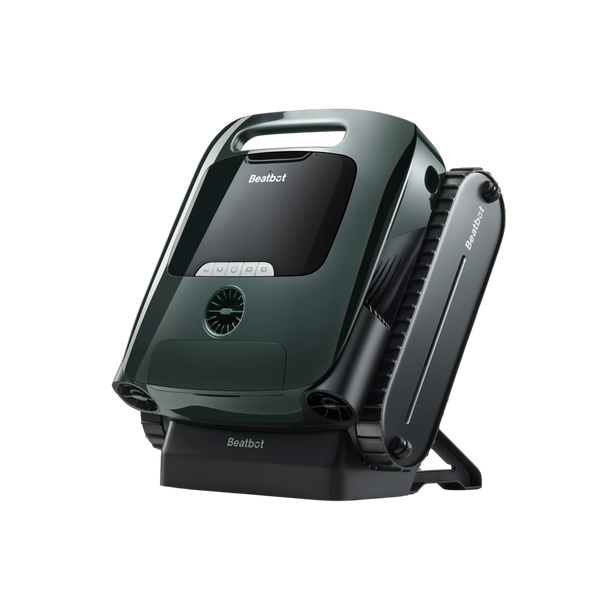Crystal Clarity: Mastering Water Testing for Your Saltwater Pool
Having a saltwater pool is like having a private oasis. It is a pleasure to swimmers, with soft waves and silky feel, a balanced state between technology and nature. But underneath, it’s a fragile ecosystem that needs to be delicately maintained. Testing the quality of your pool water is more than just a maintenance task; it’s the secret to maintaining the crystalline, healthy, and welcoming oasis that you imagined. This piece covers when to test the water qualities of your saltwater pool and how to do it with unparalleled accuracy using the test kits. Get ready to revolutionize your swim maintenance routine and make sure every dip is a dream.
Table of contents

The Timing of Perfection: When to Test Your Pool Water
Regular Monitoring
Your saltwater pool is based on consistency . Having regular water tests means you can maintain the ideal chemical balance and make sure it is safe and comfortable for swimmers.
For routine care , you need to test your water two to three times per week while you’re using the pool. Your pool’s water chemistry is directly affected by the activity level, frequency of use, and environmental conditions.
Picture having a fun pool party on a hot summer day. Sunscreens and oils, sweat and environmental debris make their way into the water, fundamentally changing its composition. In those situations, you must test your water the following day. So we go through the trouble of checking our water balance, but forget to regularly clean and disinfect our hot tub, which can cause a chain reaction of issues from cloudiness to skin irritation and even bacterium propagation.
Seasonal Adjustments
Special care is required during transitional periods, like the opening of the pool in springtime or its closing in autumn. When you open up your pool again after having left it dormant for months, your water chemistry could be completely out of balance. Early-season testing helps establish a hassle-free swimming season. And just like that, testing before closing the pool ensures that the winterizing chemicals you entered the pool will properly function to protect your investment during the colder months. If not prepared well for the winter, your pool will turn into an algae breeding ground where debris will accumulate, leading to major cleaning work when you reopen.
After Heavy Rain or Storms
Rainwater may seem harmless, but it is laced with contaminants and will dilute your pool’s chemical balance. Storms can carry debris, organic matter and changing pH levels that may wreak havoc on your pool’s chemistry. After heavy rain, test your water so you can adjust it promptly to keep your pool enticing and algae-free. Neglecting to act quickly can result in color changes, unpleasant smells and swimming safety hazards.
Post-Chemical Adjustments
Put in chemicals isn’t an end in itself. It is a step to find balance. If you’ve adjusted the salinity or shocked your pool, for example, give it a few hours to circulate before you retest. This ensures that the changes have gone through every part of the water and that you can make any additional corrections if needed. Just worth noting, pool maintenance is more of an ongoing activity, that needs continuous monitoring and adjustments to keep its water balanced and inviting.
Mastering the Art of Accuracy: Using Test Kits Effectively
Not unlike the artist selecting the right tool, choosing the right test kit is crucial. It drives the accuracy and credibility of your findings. Test kits usually come in two types: test strips and liquid reagent kits . Knowing how to use each correctly is key, even though both have their merits.
Liquid Reagent Kits: The Gold Standard
Liquid reagent kits are known for being accurate. Every piece of equipment, from the dropper size bottles to the color comparator, is carefully calibrated for precision.
To employ them successfully, start with a water sample taken at elbow depth; it provides a better picture of the pool’s overall chemistry than surface water. Make sure to use a clean container to avoid contamination.
Read directions carefully; each of the reagent kits is intended for specific parameters, such as pH, chlorine, alkalinity, etc.
Add the reagents dropwise, swirling between additions for even mixing. Compare it as soon as the color changes with the scale provide. This keeps them from being shifted to a different color by external lighting.
Finally, rinse well and store in a cool, dry place to keep the equipment working its best. Failing to take care of your kit the right way can lead to false results that can risk the quality of your pool.
Test Strips: The Quick and Convenient Alternative
The test strips are super convenient for a quick check. For accurate results, dunk the strip all the way into the pool water and swirl it slightly, so you know it is thoroughly immersed in the pool’s chemistry.
Don’t keep it submerged too long, following the manufacturer’s timing recommendations. Take the strip as soon as and instantly compare its shade adjustments with the chart you are provided with.
Though not as exacting as reagent kits, they are ideal for repeated, low-hassle diagnoses. Consistent use of test strips will allow you to identify trends in your pool’s chemistry and catch issues before it gets out of hand.

Decoding the Parameters: What to Look For
Some key parameters to monitor in order to keep the saltwater pool in good health and clear are as follows.
Salinity should range between 2,700 and 3,400 ppm, ideal being 3,200 ppm.
PH should be between 7.4 and 7.6, which is very important regarding the comfort of swimmers and also the durability of equipment.
Chlorine levels are highly important for sanitation. It should stay between 1 and 3 ppm.
The alkalinity buffers the pH. It should be between 80 and 120 ppm.
Calcium hardness is important to prevent scaling and corrosion. It should stay between 200 and 400 ppm.
Cyanuric acid protects chlorine against UV degradation. Its content in saltwater pools should be in the range of 30 to 50 ppm.
Regular testing of these parameters will ensure a safe and pleasant environment for swimmers.
Achieving Consistency and Mastery
The key to pool maintenance is to be consistent. Frequent testing helps you track trends and discover problems before they become serious. A gradual drop in chlorine levels, for instance, could signal a problem with your generator or your sanitation system. Other tools, like digital water testers, can help you be more precise. They offer instantaneous feedback with minimal effort, merging convenience and precision. Although these cost a little more at the time of purchase, their dependability is worth the cost to anyone who uses a pool regularly.
In addition, a pool care routine that fits your lifestyle will reduce maintenance. The conditions when you test your pool can also affect the results, as testing early morning or late evening, when the water is not influenced by sunlight and swimmer activity, will give a cross-sectioning analysis enabling you to get more accurate readings. Detailed notes on your testing results will let you forecast seasonal needs, chemical additions, and help you maintain your water quality year-round.
The Final Touch: Useful Tips for Effortless Pool Testing
To wrap things up, here are a few practical tips to take your water testing to the next level.
Reserve certain days and times to test so that it becomes a seamless habit. Your results are also influenced by periodic calibration of digital testers and the replacement of old reagents or strips.
Maintain an accurate testing log to record the test results to provide you with a historical view, including the ability to identify trends which can be used to forecast maintenance requirements.
Clear up issues as soon as they start; little imbalances can blow up and turn into big problems.
Finally, don’t be afraid to ask pool pros for advice or to help troubleshoot more complicated problems. Their expertise will save you time and effort, allowing you to enjoy a sparkling clean paradise.
It’s not all chemistry when testing your saltwater pool’s water quality; it’s about an experience you want to maintain. With the right timing, tools, and techniques, you’ll make sure every dip is as magical as the first. So test away with confidence and allow your pool’s brilliance to shine through every swim.
Your saltwater pool is not just a luxury; it is a haven. With proper testing and care, this space can become a glimmering sanctuary that’s refreshing and restorative. So roll up those sleeves, evaluate those results, follow through with those adjustments and enjoy the fruits of your labor when you end up with a crystal clear pool!
Relative Blogs
About the author



















